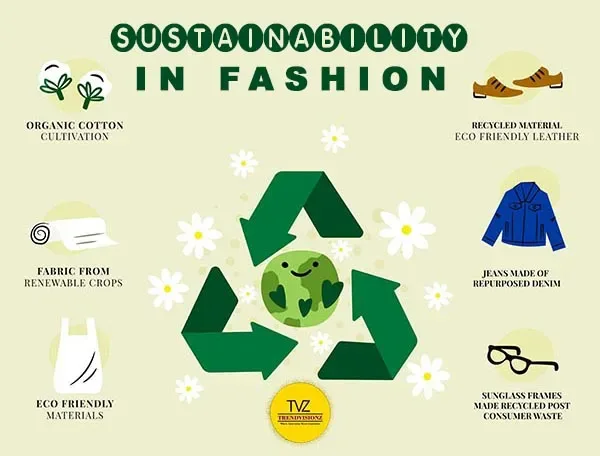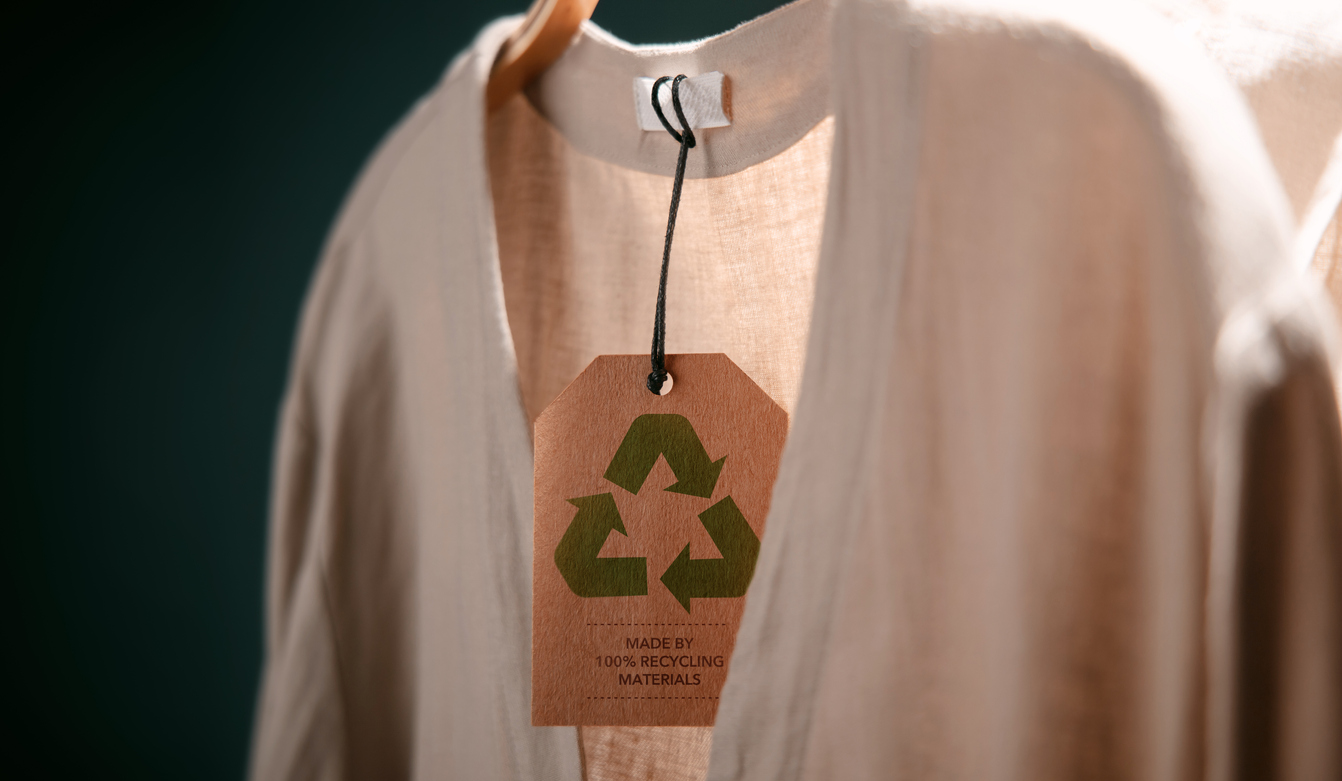The Long Term of Cape Town Sustainable Fashion in the Global Market
The Long Term of Cape Town Sustainable Fashion in the Global Market
Blog Article
Remain Ahead of the Contour by Exploring Cutting-edge Style Patterns
In an industry as vibrant as fashion, staying ahead entails greater than simply complying with current fads-- it demands an exploration of technology. Smart textiles, as an example, are transforming garments right into useful work of arts, while 3D printing is reinventing layout processes with its customizable, waste-reducing capabilities. As sustainability becomes a cornerstone, developments like environmentally friendly products and circular fashion techniques are reshaping environmental duty - Cape Town Sustainable Fashion. Additionally, the merging of innovation and fashion heralds a new period of consumer involvement. How, then, can these emerging fads redefine the future of style, and what ramifications do they hold for brands seeking to grow in this progressing landscape?

Welcoming Smart Textiles
In recent years, the fashion business has actually seen a transformative change with the integration of smart textiles, an innovative advancement that mixes modern technology with fabric. This advancement represents not just a blend of appearances and capability yet likewise a significant jump towards sustainability and personalization in vogue. Smart textiles, also called e-textiles, installed sophisticated electronic devices such as sensors and conductive threads within the material, allowing garments to connect with the environment or the wearer.
These textiles are designed to keep track of physical specifications, such as heart rate or body temperature level, providing real-time health analytics. Beyond health and wellness applications, wise textiles are likewise being made use of for flexible garments, which can transform shade or pattern in response to ecological stimuli, hence supplying a dynamic fashion experience.
Furthermore, the development of energy-harvesting fabrics that generate power from activity or sunshine is leading the means for self-dependent wearable technology. This advancement is interesting environmentally mindful customers and developers aiming to minimize the ecological impact of style. As research and growth in this area advancement, wise fabrics are anticipated to come to be increasingly common, reshaping the landscape of modern-day fashion with their multifunctional abilities.
The Increase of 3D Printing
Changing the production landscape, 3D printing has emerged as a game-changer in the fashion business. This sophisticated technology has made it possible for designers to push the borders of creative thinking, creating intricate and tailored garments that were formerly unimaginable. By leveraging electronic layout and additive production, 3D printing facilitates the creation of complicated geometries and patterns, permitting developers to trying out brand-new appearances and frameworks.
A remarkable benefit of 3D printing in fashion is its capacity to produce on-demand, lessening waste and reducing stock demands. This performance not just maximizes production processes but likewise enables for fast prototyping, allowing designers to bring their visions to life in a shorter timeframe. Furthermore, 3D printing supports modification somewhat unparalleled by traditional techniques, offering personalized fits and unique layouts customized to private customer preferences.
The rise of 3D printing has actually also equalized fashion, making it easily accessible to emerging developers who can now fabricate top quality items without considerable financial investment in standard production framework. As innovation remains to advancement, the style market is poised to harness the full possibility of 3D printing, checking out new materials and strategies that will certainly redefine how fashion is conceived and produced.
Sustainable Style Innovations
As the apparel industry faces the pressing demand for environmental responsibility, lasting fashion developments have you could check here arised at the forefront of transformative adjustment. The expanding understanding of eco-friendly impact has fueled a change in the direction of even more eco-conscious techniques and products. Developers and brand names are currently focusing on sustainability, incorporating techniques that decrease waste and reduce carbon footprints.
One significant advancement is the increase of circular style, which emphasizes recycling and upcycling to prolong the lifecycle of garments. This strategy not only reduces waste however additionally urges consumers to take on an extra mindful approach to clothes usage. Furthermore, the use of sustainable products, such as natural cotton, hemp, and recycled polyester, has obtained traction. These products need much less water and power throughout manufacturing, dramatically minimizing ecological effect.
Another advancement lies in the adoption of innovative dyeing techniques that use all-natural dyes or waterless procedures, consequently minimizing the vast amounts of water and chemicals traditionally utilized in fabric dyeing. Additionally, improvements in biotechnology have resulted in the production of lab-grown leather and materials, supplying cruelty-free and eco friendly options to conventional materials. Through these pioneering efforts, the fashion business is making significant strides towards a much more sustainable future.

Tech-Integrated Garments
Tech-integrated apparel represents a revolutionary fusion of style and modern technology, improving exactly how individuals connect with their clothing. This ingenious domain is noted by the inclusion of wise fabrics and ingrained digital elements, enhancing both functionality and visual charm. From physical fitness trackers embedded in sportswear to heated jackets managed through smartphone applications, tech-integrated clothing provides customers unprecedented convenience and versatility.
Introducing brand names are driving this fad, concentrating on developing garments that react to ecological stimulations or user commands. For instance, some garments can transform shade or pattern in reaction to temperature changes, while others incorporate biometric sensors to keep track of wellness metrics like heart price or stress levels. The smooth assimilation of modern technology right into textiles additionally encompasses environmental sustainability, with initiatives to establish self-cleaning materials or garments that adapt to climate condition, therefore decreasing the demand for several layers.
Furthermore, the advent of wearable modern technology is not simply limited to clothing however encompasses devices like watches and eyewear, additional expanding the extent of tech-integrated fashion. As the market remains to introduce, the potential for personalization and personalization in apparel grows, supplying consumers special, tech-enhanced style experiences that provide to their specific requirements and choices.
Future of Virtual Style
Recently, the future of digital fashion has actually become a transformative pressure within the that site market, leveraging innovations in digital technology to redefine exactly how fashion is produced, experienced, and eaten. By integrating enhanced fact (AR), online truth (VIRTUAL REALITY), and 3D style tools, developers can now craft interactive and immersive experiences that transcend typical fashion limits. Online style permits the production of garments that exist exclusively in electronic settings, providing limitless possibilities for technology without the constraints of physical manufacturing.
This electronic shift not just provides possibilities for innovative expression but additionally addresses sustainability concerns integral in standard style practices. Cape Town Sustainable Fashion. By getting rid of the requirement for physical sources, virtual style minimizes waste and lessens carbon footprints. Moreover, the surge of online fashion straightens with the enhancing consumer demand for tailored and distinct experiences, as digital garments can be personalized and tailored to individual preferences easily

Final Thought
The style sector's future lies in the combination of ingenious innovations and lasting practices. Digital style is poised to redefine over here customer interactions.
In recent years, the style market has experienced a transformative shift with the assimilation of smart fabrics, an advanced technology that mixes innovation with material.As the fashion market grapples with the pressing need for environmental duty, sustainable style advancements have actually arised at the forefront of transformative adjustment.In current years, the future of digital fashion has emerged as a transformative pressure within the market, leveraging advancements in digital modern technology to redefine how fashion is produced, experienced, and consumed. The increase of online style straightens with the boosting customer demand for one-of-a-kind and tailored experiences, as virtual garments can be personalized and tailored to private choices with convenience.
The style industry's future lies in the assimilation of lasting techniques and innovative innovations.
Report this page